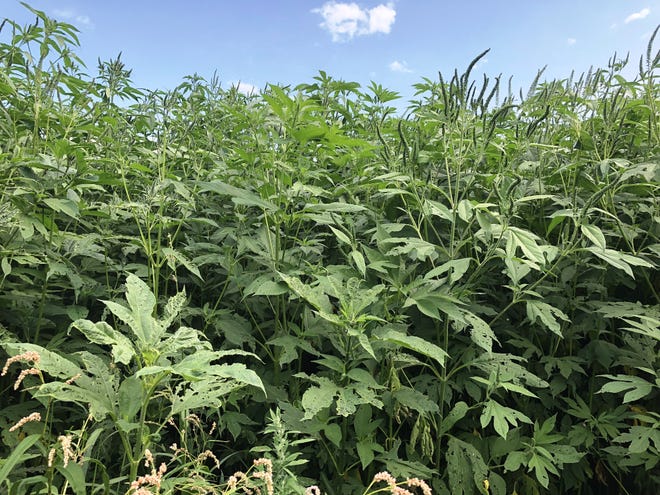If you’re sniffling and sneezing a little more this allergy season than before, scientists might have an explanation.
According to Dr. Robert Hartzler, Professor Emeritus of Agronomy and Weed Extension at Iowa State University, this is the time of year when ragweed pollen is most likely to be found in the air. He said that as the days get shorter as winter approaches, ragweed is more likely to bloom, releasing the common grass’s often allergenic pollen into the atmosphere.
Hartzler said studies have shown that the pollen produced by ragweed has increased in quantity and potency over the past 40 to 50 years. Scientists are beginning to see that climate change is likely to blame, he said.
More pollen, more problems
Dr. Lewis Ziska, associate professor of environmental health sciences at Columbia University Irving Medical Center, said climate change is impacting the rate at which common allergens such as ragweed grow.
Ziska said carbon dioxide, which is released into the atmosphere at high rates due to fossil fuel emissions, is a resource plants need to thrive. But higher levels of carbon dioxide in the atmosphere can have abnormal effects on certain types of plant growth, he said.
“When CO2 increases, it can stimulate plant growth, and one of the plants that is stimulated to grow is ragweed, as well as other plants that produce pollen,” he said. .
Ziska said studies are beginning to show that carbon dioxide not only increases the amount of pollen in the atmosphere, but also intensifies its allergen content.
“The protein on the surface of the pollen changes in such a way that the amount of allergen, i.e. the protein that causes the immune response, also increases,” he said.
After:The heat wave aggravates your allergies? Experts say maybe. Here’s what you need to know
His research, conducted alongside researchers from the School of Biological Sciences at the University of Utah, found that “human-induced climate change” is linked to a “substantial intensification of pollen seasons in North America over the period 1990 to 2018”. Their research concluded that pollen seasons start 20 days earlier, last 10 days longer, and release an average of 21% more pollen into the air than they did in 1990.
The study builds on previous smaller experiments that found strong links between temperature and pollen count. It pulls data from more than 60 pollen counting stations across the country. None of the stations are in Iowa, but the data collected is from nearby Omaha; La Crosse, Wis.; and Kansas City, Missouri.
By applying statistical methods to a series of climate models, Ziska and his colleagues were able to conclude that climate change alone accounted for “about half of the lengthening of the pollen season and about 8% of the increase in the amount pollen”.
After:Hay fever sets in? Here are the 20 worst cities for people with seasonal allergies.
Pollen levels vary by location
While the study relies on data compiled across the United States, Hartzler cautions that daily pollen levels vary widely depending on location.
The State Hygienic Lab at the University of Iowa used to track regular pollen levels, but stopped in 2013 due to state budget cuts. Hartzler said the work was difficult because measuring pollen in one location didn’t necessarily help predict levels in another location.
“If they were measuring locations in Grimes, the amount of pollen there wouldn’t really correlate with what’s in Ankeny or Newton,” he said. “It’s mainly the amount of ragweed in the immediate vicinity that determines whether you have a high pollen count or not.”
Therefore, acts as small as people not tending to their lawns or building more or less fences around a field can all contribute to the population of ragweed plants and, therefore, to the amount of ragweed pollen in the air, he said.
Hartzler said allergy season is expected to last until mid-September. Although he admits “there’s really no escaping pollen”, he recommends people with more sensitive allergies to stay indoors in the morning when pollen levels tend to be higher. the highest.
Francesca Block is a breaking news reporter at the Des Moines Register. Contact her at [email protected] or on Twitter at @francescablock3.

